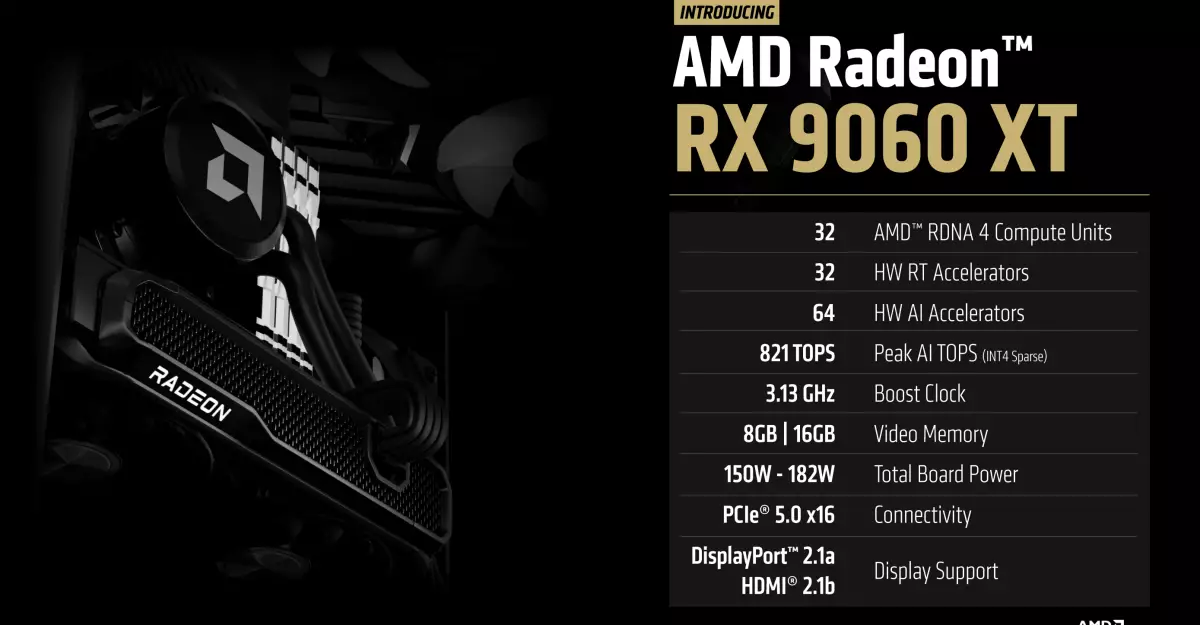AMD is taking a bold step in the GPU market with the announcement of its Radeon RX 9060 XT at Computex. Despite the absence of a release date or pricing information, the unveiling has generated significant buzz among tech enthusiasts and gamers alike. The RX 9060 XT is designed to compete directly with Nvidia’s recently launched RTX 5060. This strategic move positions AMD favorably, especially since both companies are now favoring GPUs with 8GB of VRAM in an era where gaming demands have escalated dramatically.
The 8GB VRAM Controversy
The decision to equip these new graphics cards with only 8GB of VRAM has ignited a firestorm of debate within the gaming community. Gamers have been increasingly vocal about the shortcomings of 8GB for modern titles, given the increasing complexity and graphics demands in contemporary gaming. While AMD’s RX 9060 XT offers a variant with 16GB of VRAM—an enticing option for power users—its decision to follow Nvidia’s controversial lead suggests a reactive rather than a proactive strategy. The implications of this decision could spell trouble for AMD if the RX 9060 XT fails to deliver a substantial performance advantage over its competitors.
Technical Specs that Impress
Equipped with 32 RDNA 4 compute units and a peak boost clock of 3.13GHz, the RX 9060 XT showcases impressive specs designed to captivate serious gamers. Furthermore, support for DisplayPort 2.1a and HDMI 2.1b demonstrates AMD’s commitment to future-proofing the RX 9060 XT, ensuring compatibility with the latest displays and technologies emerging in the market. With total board power rated between 150 watts and 182 watts depending on the model, these GPUs might also attract users looking for a balance between power consumption and performance.
The Competitive Landscape and Sampling Issues
Complicating matters is the peculiar launch strategy employed by Nvidia for its RTX 5060, which debuted without any accompanying reviews—critical for informed consumer decisions. This has raised eyebrows, signaling either a miscalculation in confidence regarding performance or perhaps a calculated gamble to sway early adopters amidst criticism of the 8GB VRAM limitation. The sudden silence on transparency, along with the pressure tactics allegedly employed against reviewers, has sparked outrage in the community and might inspire more gamers to scrutinize what both AMD and Nvidia bring to the table.
Looking Forward to Reviews and Performance Insights
As AMD rolls out the RX 9060 XT and Nvidia navigates its own challenges, it will be fascinating to see how these GPUs fare in independent benchmarks. The gaming landscape is often dictated not just by specs but also by genuine user experience and performance in real-world scenarios. As reviewers gear up to pit these GPUs against one another, the verdict could have far-reaching consequences for brand loyalty in a fiercely competitive market.
In the end, AMD’s entry into this new chapter with the RX 9060 XT is a crucial moment, but whether it captures the hearts of gamers will depend on more than just its specs. The community will be watching, and their voices will undoubtedly shape the narrative moving forward.

